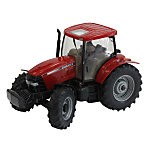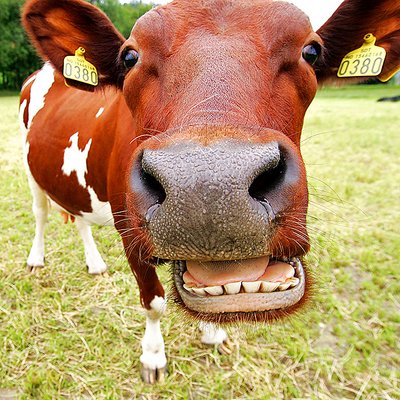If you have ever heard of a cattle show, this is what I am referring to!
What is a cattle show?
A cattle show is just like any other type of show, like a car show or a horse show. It is a way for cattle producers to market their product, hear about what the industry is looking for and compete against one another for the top cow! The video below gives you an idea of just what a cattle show looks like! The video is from a fair in Prince Edward Island, but cattle show are fairly standard around the world!
At a cattle show, exhibitors compete against other cattle in their breed for a chance to be number one. A judge enters the show ring and judges the cattle based on which cattle he thinks have the best conformation. Conformation: the best body structure, the best structural soundness, the animal that carries itself the smoothest when it walks in the ring.
Cattle shows not only market the cattle, but at most shows there is a chance for people to market themselves! Junior shows are cattle shows that only allow young ranchers to take part, usually ages 9-21, with some shows starting at age 3 or 4 to age 24. At the Junior shows, there are always a bunch of competitions for the junior showman to compete in, all testing the ability of the showman having nothing to do with how good the cattle themselves are.
Junior shows contain many different components to the show including:
- Showmanship- the junior showman competes against the other showman to see who presents their cattle the best. They are judged on how well they can handle their cattle, how well they set their cattle up, and how well they present themselves and the cattle. A showman needs to be well groomed also. The biggest job of the showman is to best present the calf to catch the judges attention. If a showman doesn't do a good job of showing the calf, the judge may overlook just how great the animal really is, which could cost the showman and the calf a chance for the championship!
- Grooming- There are competitions in which the showman has to groom their calf. The showman are judged on which animal looks the best. No calf should have any bedding on them, dirt, or mud. They should all be washed up and squeaky clean. The calves should be clipped and shaved properly, hiding the bad points and highlighting the strong points of the animal. An animal with a thick hair coat is the best for grooming because you can easily work with the hair to shape it and hide weaknesses.
- Marketing - This blog is an example of a senior marketing project for the Summer Synergy Livestock Show. In the past I have had to make business plans, marketing strategic plans, present ideas for new products, create various products and ideas, and work in groups to market random items. This all helps the youth get involved, learn a variety of skills and work on their innovation!
- Quizzes- many shows have quizzes about livestock and agriculture that competitors have to take for points toward the aggregate (overall winner).
- Judging - At summer shows all the juniors have to judge everything from dairy and beef cattle, to crops, grains and heavy horses. Upon judging a class, the competitor has to orally give his or her reasons to a judge. The judge marks the comments based on quality of the comments, as well as how close the competitor was to judging the class the same as the overall judge.
- Art- Sometimes shows have art components such as photography, painting, drawing and various other categories where competitors can show off their other talents in a way that relates to the agriculture industry of course.
The Summer Synergy Show is a show which combines Beef, Dairy, Sheep and Heavy horse shows as a way of "synergizing" agriculture and the youth involved.
Shows are a great way to meet people and work at goals, as well as set up future ties in the agricultural industry. The other showman competing against you at a show are someday going to be the other farmers and ranchers working with you in this great industry. Youth Shows give young ranchers a head start on networking and setting up good markets for themselves!
What qualities does a judge look for in the champion?
When you step foot in a show ring, you want to be able to pick out which animal will perform the best out of the show ring. The main goal for any farmer is to raise beef cattle that are productive and can bring him high quality beef. As a young rancher, I need to be able to go to the pasture and judge the cattle, so that I can easily pick out the more superior cows. No one wants a sickly, poor producing cow in their herd. Learning how to judge beef cattle helps farmers improve their herds and make them the best they can!
Before the cattle come into the show ring, the judge sets him or herself up in the middle of the ring, this gives him a good spot to view the animals as they enter. When the cattle enter the ring, their showman lead them around the outside of the ring in a clockwise fashion.
Having the cattle circle the ring once before they stop allows the judge to see how well each animal carries themself as they walk. As a farmer, we want cattle that are going to be able to move freely over the pasture in order to stay healthy. They need to be able to walk good and have good feet so that they can support themselves and a calf.
The first thing the judge does is inspect the group as a whole. Usually there are one or two animals that really stand out to the judge as being at the top or the bottom of the class (the best or the not so best).
After one circle of the ring, the animals line up head to tail down one side of the show ring. The showmen now set up their calves feet!
As a showman, it is important to properly set up a calves feet when they have stopped. As a showman it is your job to make the calf look its best in the show ring. You want to highlight the good, and try and hide the bad.
 |
| Harvie Ranching Ms Nylon 102U and Ricochet heifer calf |
Colorado State University did a great job explaining everything from halter breaking to showmanship here, they also have really good pictures, so check it out!
The judge is looking for natural muscling of the animal over the loins, shoulder, rump and round. This is how they judge the beef quality without actually seeing the meat! When judging steers, the judge is looking for cattle that are finished. Cattle that are heavy enough, without having excessive fat. They are also looking for a "good spring of rib", or a voluminous rib cage, deep and wide, in which the animal can have extra intake.
The cattle should have a straight topline, meaning their back should look nice and straight and from their back to their belly you should be able to imagine two horizontal lines making a rectangle.
The judge also needs to recognize that not every breed has the same characteristics, so they need to take into account how well that animal does in their breed category!
The judge also needs to know what to look for when judging a bull, a cow, a steer and a heifer. These animals cannot be judged using the same guidelines. For example, on a bull or a bull calf the judge needs to take into consideration the testicle development, scrotum size and attachment. On a heifer or a cow, they judge needs to look at udder development, teet placement, calf size, and femininity.
There is a great deal more to do with judging a beef animal and I would love to get more detailed in it in a later blog post, so stay tuned! For today however, I must move on!
Preparing a show cattle takes days and days of work. Instead of listing it all out for you I found a couple of videos that are awesome and informative and can give you the inside perspective of showing cattle! Enjoy!
The Apicreativemedia Channel on Youtube does an awesome job breaking down the entire showing process! From feeding, washing and clipping, right to the show ring, they have covered it in two short videos! Check them out below!
Thanks again for following and reading! Stay tuned, much more to come!
Now it is time for me to head outside and get my own show cattle ready! Off to wash and clip some calves!
Sam























